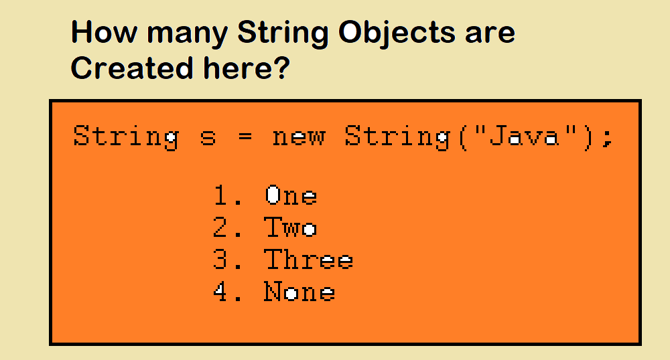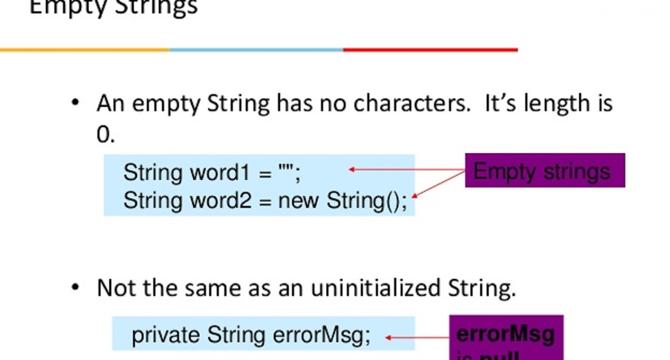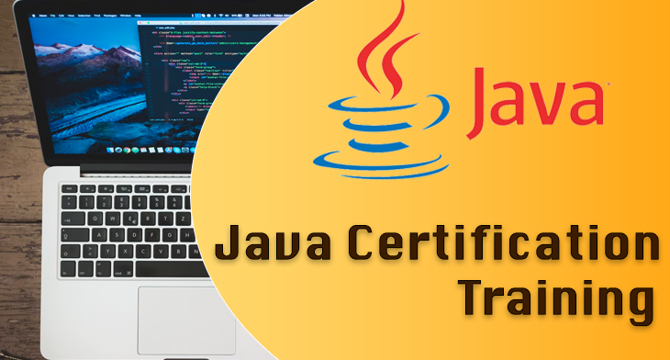Java
Siliconangle
131

Image Credit: Siliconangle
Researchers uncover weak encryption in SAP user interface for Windows and Java
- SAP addressed vulnerabilities in its SAP GUI client applications, discovered by Pathlock Inc. and Fortinet Inc., involving weak or absent encryption in input history functions.
- The vulnerabilities, CVE-2025-0055 and CVE-2025-0056, exposed sensitive user data stored on local machines due to encryption issues in SAP GUI for Windows and SAP GUI for Java.
- SAP GUI for Windows stored data using weak XOR-based encryption, making it easily reversible, while SAP GUI for Java stored data entirely unencrypted in serialized objects.
- SAP released updates to address the vulnerabilities but experts recommend disabling input history feature and implementing mitigation measures due to the potential risk of exposure of sensitive data.
Read Full Article
7 Likes
Javarevisited
221

Image Credit: Javarevisited
Top 15 Java String interview Question Answers for 3 to 5 Years Experienced
- Java String interview questions are crucial for 3 to 5 years experienced Java developers and are integral in Core Java or J2EE interviews.
- Understanding Java String is essential as it is heavily used in various types of Java applications such as desktop, web, enterprise, and mobile applications.
- The Java String class is fundamental in Java programming, and every Java programmer must have a thorough understanding of it.
- Java's String class has unique features and privileges, including overloading the + operator for String concatenation despite Java not supporting operator overloading.
- Java maintains a separate String pool to store String literals.
- The tutorial also covers Java, Unix, Tibco RV, and FIX Protocol.
- This article highlights 10 Java String interview questions along with their answers tailored for Java developers with 3 to 5 years of experience.
Read Full Article
13 Likes
Javarevisited
0

Image Credit: Javarevisited
How to check if String is not null and empty in Java? Example
- In Java, checking if a String is both not null and not empty can be tricky for beginners as null and empty are different concepts.
- A String reference variable is null if not initialized, and an empty String has zero characters.
- Whitespace may not be considered an empty String in all cases, depending on the situation.
- There are correct ways to test if a String is not null and not empty in Java.
- The article covers these techniques.
- Title: Java, Unix, Tibco RV and FIX Protocol Tutorial.
Read Full Article
Like
Medium
452

Image Credit: Medium
Discover the Premier Java Training Institute in Pitampura
- Java remains popular due to high demand in various sectors and a strong community.
- Benefits of training at this institute include experienced instructors and a comprehensive curriculum covering core Java, advanced Java, Java EE, frameworks, and web technologies.
- Practical learning includes real-world projects, coding challenges, and group projects to enhance skills.
- Placement assistance is provided through resume building, interview preparation, and industry connections.
- A supportive learning environment with small class sizes ensures personalized attention for student growth.
- Additional resources include online access, certification upon completion, and opportunities for continued learning.
- Choosing Dics Innovatives for Java training in Pitampura can lead to a successful programming career with a focus on quality education and strong support.
Read Full Article
4 Likes
Discover more
Infoq
234

Image Credit: Infoq
Java News Roundup: MicroProfile, Open Liberty, TomEE, JobRunr, LangChain4j, Apple SwiftJava
- This Java news roundup includes updates on MicroProfile 7.1, Apache TomEE 10.1, LangChain4j 1.1, Open Liberty, JobRunr 8.0 beta, and Apple's SwiftJava utility.
- JDK 25 Build 28 was released with various fixes, while JDK 26 Build 3 also addressed multiple issues.
- Jakarta EE 11 ballot concluded, and the release date celebration is impending.
- Spring projects received point releases, with OSS support ending on June 30, 2025.
- MicroProfile 7.1 introduces updates to Telemetry and Open API specs.
- Open Liberty 25.0.0.6 integrates Microprofile Health 4.0 specification and enhances health check mechanisms.
- JobRunr 8.0.0 beta 2 features Carbon Aware Job Processing and Kotlin serialization support.
- LangChain4j 1.1.0 release includes various modules for developer use.
- Apple's SwiftJava offers Java-Swift interoperability tools, recently introduced at WWDC25.
- Apache TomEE 10.1.0 and Log4j 2.25.0 releases bring bug fixes and updates aligned with MicroProfile.
Read Full Article
14 Likes
Medium
118

Image Credit: Medium
Creating User Menus in Java with Loops and Switch
- A working menu stays active by repeating the same code until the user chooses to exit.
- Loops in Java follow simple rules, with while loop running as long as a condition is true and do-while loop running the body at least once before checking the condition.
- A do-while loop is often smoother for handling menus as it does not require preloading the condition.
- The switch statement in Java is used to match user's choice to a fixed set of possible actions in menu-driven programs.
- Validation is crucial in menu code to handle input errors and ensure stability by catching bad input early.
- Using hasNextInt() before reading a number helps prevent program crashes when user input does not match the expected type.
- In console menus, input checks are essential for building well-built interfaces and safer tools by expecting user mistakes.
- API keys and authentication play a role in real access controls for remote systems, ensuring trust in user requests.
- Implementing a basic login gate inside a menu can mimic user-based access control for protected data.
- Understanding and implementing these menu structures early can lead to clear, safe, and enforced rules for user interactions in programs.
Read Full Article
7 Likes
Infoq
142

Image Credit: Infoq
GPULlama3.java Brings GPU-Accelerated LLM Inference to Pure Java
- The University of Manchester's Beehive Lab has released GPULlama3.java, the first Java-native implementation of Llama3 with automatic GPU acceleration.
- GPULlama3.java leverages TornadoVM to enable GPU-accelerated large language model inference in Java without requiring developers to write CUDA or native code.
- TornadoVM, at the core of GPULlama3.java, extends OpenJDK and GraalVM to automatically accelerate Java programs on GPUs, FPGAs, and multi-core CPUs.
- TornadoVM works by extending the Graal JIT compiler with specialized backends that translate Java bytecode to GPU-compatible code at runtime when marked for acceleration.
- The project supports NVIDIA GPUs, Intel GPUs, and Apple Silicon through various backends for diverse hardware execution.
- GPULlama3.java leverages modern Java features like Vector API, Foreign Memory API support, GGUF format for model deployment, and quantization support.
- The project builds upon Mukel's original Llama3.java, integrating GPU acceleration capabilities through TornadoVM.
- GPULlama3.java is part of the expanding Java ecosystem for AI/ML, allowing developers to build LLM-powered applications without leaving the Java platform.
- TornadoVM aims to make heterogeneous computing accessible to Java developers and has been evolving since 2013 with new backend support and optimizations.
- GPULlama3.java is currently in beta, focusing on performance optimization and benchmark collection, especially for Apple Silicon support.
- The project signifies a significant advancement in bringing GPU-accelerated LLM inference to Java, showcasing the potential for Java-based AI applications in enterprise settings.
- Developers interested in exploring GPU-accelerated LLM inference in Java can access the open-source project on GitHub with comprehensive documentation and examples.
Read Full Article
8 Likes
Javacodegeeks
345

Image Credit: Javacodegeeks
Compile Java Code with Java Compiler API
- Java 6 introduced the Java Compiler API (JSR 199) for compiling Java source code within Java applications, providing a dynamic and programmable way to compile code.
- The Java Compiler API allows compiling Java source code without the need for external tools, beneficial for tools like IDEs and online coding platforms.
- Key components of the Java Compiler API include JavaCompiler, StandardJavaFileManager, DiagnosticCollector, and JavaFileObject.
- These components work together to offer flexible and embeddable Java code compilation capabilities.
- By implementing a compilation check using the Java Compiler API, developers can compile Java source files programmatically.
- The code example demonstrates compiling a Java file, capturing compilation diagnostics, and handling the compilation process.
- The Java Compiler API is powerful for integrating dynamic code compilation into Java applications and requires handling input sanitization and security measures.
- Developers can leverage the Java Compiler API for building online compilers, tools, and platforms that evaluate Java code at runtime.
- The API provides fine-grained control over compilation tasks and file operations for efficient code compilation.
- Compilation success or failure is indicated with detailed diagnostic messages to assist developers in locating and resolving errors.
Read Full Article
20 Likes
Dev
253

Image Credit: Dev
How small can Java app on the container
- Using Micronaut + GraalVM can help build lightning-fast Java applications with minimal container footprint.
- Steps include creating a Micronaut app, containerizing it, and optimizing it with native images and distroless containers.
- Micronaut Launch tool or CLI can be used to generate a Micronaut project.
- Docker artifacts can be built conveniently using Micronaut's Gradle tasks.
- Optimizing with GraalVM involves running tasks to generate directories and building Docker images.
- Further optimization with distroless containers can reduce container size and improve startup time.
- Overall, Micronaut + GraalVM combination enhances Java application performance for cloud-native and serverless deployments.
- Native compilation and container optimizations make Java a competitive choice for scalable microservices.
- Further details can be found at the provided link for efficient Java containers.
Read Full Article
15 Likes
Medium
127

Image Credit: Medium
Using If Else Statements to Handle Choices for Beginners in Java
- Java uses if, else if, and else statements to make choices based on conditions.
- An if statement in Java checks a boolean expression inside parentheses to control code execution.
- Java bytecode instructions like if_icmpgt, if_icmpeq, if_icmple handle comparisons for numbers.
- The else if statement allows chaining multiple conditions to test different values sequentially.
- The else block serves as a catch-all for cases that didn't match any preceding conditions.
- Braces around a block are optional for a single line but are recommended to avoid errors.
- Java requires conditions in if statements to result in boolean values.
- Combining checks in Java is done using && (and) or || (or) operators.
- The program chooses the path based on the first condition that evaluates to true.
- Examples like grading scales and pricing rules demonstrate the practical application of if, else if, and else in Java.
Read Full Article
7 Likes
Self-Learning-Java
183

LangChain4j: Understanding Its Levels of Abstraction for Java-Based LLM Applications
- LangChain4j is a Java-native framework that offers two levels of abstraction for integrating Large Language Models (LLMs) into applications.
- The two levels of abstraction provided by LangChain4j are Low-Level Abstraction and High-Level Abstraction.
- Low-Level Abstraction gives developers full control over customized workflows and direct access to LLM primitives.
- Components accessible at the low-level include ChatModel, LanguageModel, UserMessage, AiMessage, EmbeddingStore, Embedding, ImageModel, ModerationModel, and ScoringModel.
- With Low-Level Abstraction, developers need to manage input formatting, output parsing, state, and chaining logic manually.
- High-Level Abstraction, known as AI Services, simplifies common LLM tasks using a declarative, proxy-based interface.
- AI Services handle formatting inputs for LLMs, parsing LLM responses, managing chat memory, integrating tools, and supporting Retrieval-Augmented Generation (RAG).
- Developers define interactions with LLMs as Java interfaces, and LangChain4j generates concrete implementations at runtime.
- LangChain4j aims to reduce boilerplate and increase developer productivity with its High-Level Abstraction using AI Services.
Read Full Article
11 Likes
Dev
19

Image Credit: Dev
Propify: Type-Safe Configuration and Internationalization for Java Applications
- Propify is a Java annotation processor that provides type-safe configuration and internationalization for Java applications, eliminating runtime errors and improving developer productivity.
- It generates type-safe classes from configuration files and internationalization bundles, allowing access through strongly-typed Java methods.
- Propify addresses issues with traditional approaches like string-based lookups, manual type conversion, lack of compile-time validation, and excessive boilerplate code.
- Key features include type-safe access, compile-time validation, support for nested properties, custom lookups, zero runtime overhead, and more.
- Installation and setup with Maven or Gradle are straightforward, requiring the addition of dependencies and annotation processors.
- Configuration in 3 steps involves creating a file, annotating an interface, and using the generated class for type-safe access.
- For internationalization, Propify simplifies the process by generating type-safe resource bundles with the ability to access messages in different locales.
- Advanced features include custom lookups for dynamic values, support for multiple configuration formats, and practical examples for nested and environment-specific configurations.
- Benefits for enterprise applications include reduced bugs, improved developer experience, better maintainability, enhanced security, and simplified internationalization.
- Propify leverages Java's annotation processing system to provide type safety with zero runtime overhead, making it suitable for applications of any size.
- It is a valuable tool for managing configuration and internationalization in a type-safe and maintainable manner, offering a better developer experience.
Read Full Article
1 Like
Dev
15

Image Credit: Dev
History of Java: evolution, legal battles with Microsoft, Mars exploration, Spring, Gradle and Maven, IDEA and Eclipse
- Java was launched in 1990 by Sun Microsystems with the mission of creating a universal programming language for diverse devices.
- Initially named Oak, the language was later rebranded as Java, inspired by Indonesian coffee.
- Legal battles with Microsoft arose over Microsoft's deviations from Java specifications in their MSJVM.
- Java 1.0 debuted in 1996, marking its emergence as a platform-independent, versatile tool.
- J2SE 1.2 introduced innovations like strictfp, Swing, Collections Framework, and JIT compilation.
- IntelliJ IDEA revolutionized Java IDEs with advanced features and went open-source in 2009.
- Eclipse emerged in 2001 as a modular and extensible IDE for Java, becoming popular in the Java community.
- Spring was introduced in 2004 as a lightweight alternative to Java EE, gaining popularity for its simplicity and flexibility.
- Apache Maven, released in 2008, revolutionized project builds with declarative POM files.
- Gradle, also in 2008, offered a modern build automation tool with flexibility and script readability.
Read Full Article
Like
Dev
251

Image Credit: Dev
🚀 🧠 Java Stream API Practice Guide – Concepts and Real-World Use Cases
- Java Streams are used for declarative data processing.
- List of important Java Stream API methods and their use cases:
- 1. map() - Transform each element.
- 2. filter() - Remove elements based on a condition.
- 3. flatMap() - Flatten nested collections into a single stream.
- 4. collect() - Terminal operation to accumulate stream results.
- 5. toMap() - Create a map from stream data.
- 6. groupingBy() - Group elements by a classifier function.
- 7. partitioningBy() - Split elements into two groups.
- 8. reduce() - Combine elements into a single result.
- 9. distinct() - Remove duplicates.
- 10. sorted() - Sort the stream.
- 11. limit() / skip() - Pagination-style control.
- 12. anyMatch(), allMatch(), noneMatch() - Test if elements match a condition.
- 13. findFirst() / findAny() - Get an optional element.
- 14. peek() - Debug intermediary steps.
- 15. count() - Count elements in the stream.
- Practice Ideas: Use a single object model like Developer, Project, and Department.
- Relationships like skills, salary, projects, and more can be practiced with this model.
Read Full Article
15 Likes
Dev
59

Image Credit: Dev
Restarting My Java Journey: From Exam-Oriented Learning to Becoming a Real Developer
- The author reflects on their Java programming journey, starting with exam-focused learning and transitioning to becoming a professional developer.
- Initially, the focus was on passing exams, memorizing syntax, and completing assignments without a deep understanding.
- A shift in mindset led to a decision to restart learning Java with a focus on problem-solving and practical application.
- The author's new approach includes revisiting core Java concepts, practicing advanced Java with real projects, and delving into Hibernate and Spring frameworks.
- Beyond Java, the author aims to grow as a developer by learning software development principles and preparing for interviews.
- The author shares their journey through a blog to stay accountable and inspire other beginners.
- A 21-Day Preparation Challenge has been initiated covering Java concepts, problem-solving, communication skills, and interview readiness.
- The author emphasizes the importance of intent to improve, consistency, and honesty in the learning process.
- The narrative encourages connections and sharing of experiences among individuals following a similar path.
- The journey spans from exam-oriented learning to skill-based learning, highlighting the significance of continuous improvement.
- The author invites engagement and mutual growth within the learning community.
- The journey signifies the importance of transitioning from exam-focused learning to skill-based development for personal and professional growth.
Read Full Article
3 Likes
For uninterrupted reading, download the app